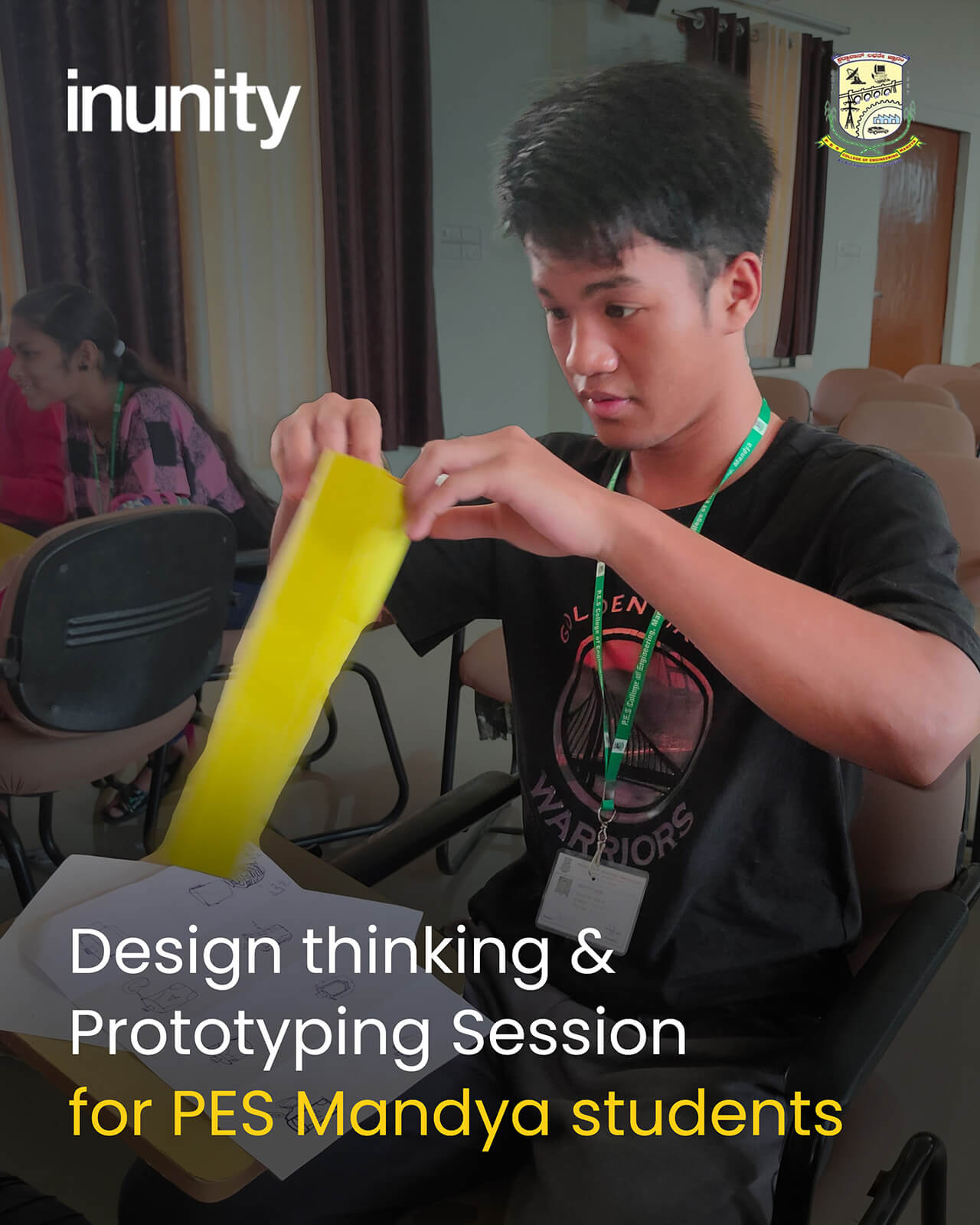In an engaging Innovation and Design Thinking session organised by InUnity, students at PES Mandya are forging new paths in the realm of User Interface and User Experience (UI/UX) design. In a delightful and collaborative session dedicated to UI/UX, these accomplished students employed the art of paper prototyping to develop a user-friendly travel application. They sketched out their ideas and shared their insights, effectively collaborating as a team to enhance the ease and enjoyment of travel. The result? Their very first paper prototype, serving as a testament to their inventive spirit and ingenuity. We take pride in cultivating an environment that nurtures innovation and hands-on learning. Our students are not merely acquiring knowledge about UI/UX, they are actively striving to enhance and make applications more user-friendly.

The initial session commenced with a dynamic and engaging atmosphere, immersing students in the world of UI/UX. Students were not just learning, but were actively participating in the process of creating user-friendly interfaces. Their mission in this session was to create a user-friendly travel app. Through collaboration and creativity, they designed wireframes and shared concepts, ultimately crafting a cohesive user interface that promised a seamless and engaging user experience. This hands-on experience left them with valuable insights into the significance of user-centric design and the creative problem-solving integral to this field.
In the second session, students went deeper into the world of design thinking and prototyping. They explored the idea of bridging the gap between imagination and reality through innovative prototypes. This session aimed to instil in them an understanding of the power of transforming ideas into tangible solutions.
Students were challenged to witness the transformation of their ideas into reality via innovative prototypes. They learned that design thinking encompasses not only ideation but also the practical realisation of concepts. Through various prototyping techniques, students could visualise and refine their ideas, gaining a clear understanding of the iterative and user-centric approach that characterises successful design projects.
The session highlighted that converting dreams into reality involves not just creativity but also practical implementation. By creating prototypes, students gained hands-on experience in bringing their ideas to life. The importance of prototyping as a means of refining and validating design concepts became evident, as they witnessed the evolution of their projects throughout the session.
The two sessions, focused on paper prototyping and design thinking, provided students with a comprehensive understanding of UI/UX design. They learned to create user-friendly interfaces and embraced design thinking as a way to bridge the gap between their creative ideas and practical implementation. These sessions served as invaluable building blocks for their future careers in the dynamic field of design and technology. By equipping them with the tools and knowledge needed to navigate UI/UX and make their ideas a reality, these sessions have set them on the path to becoming skilled and innovative designers.

